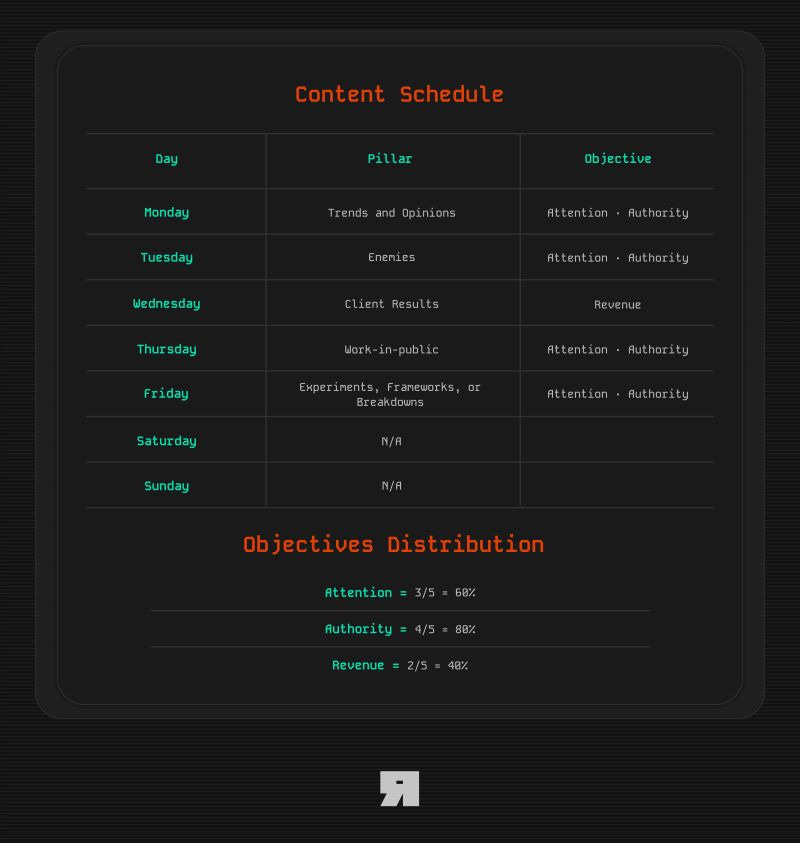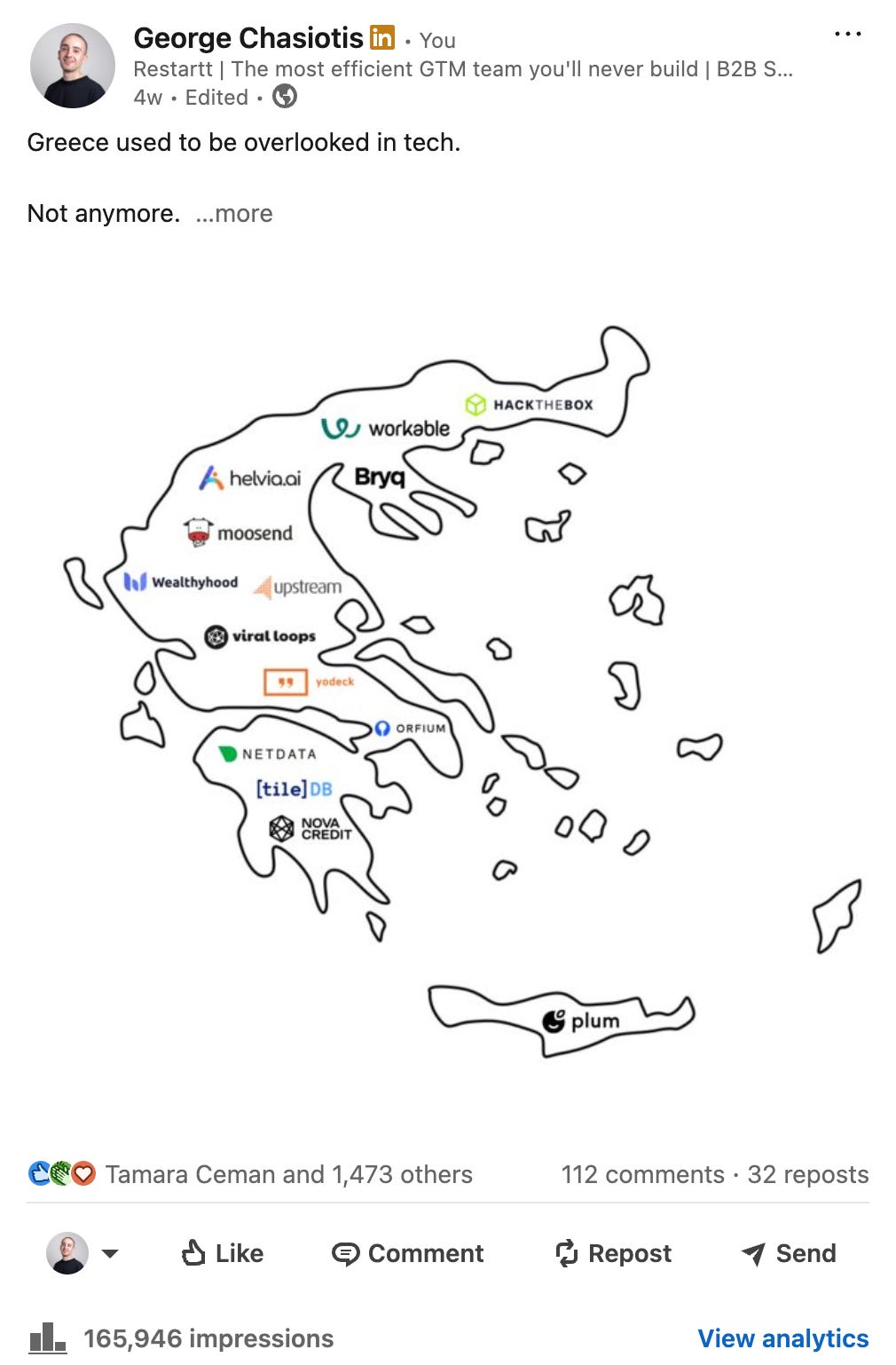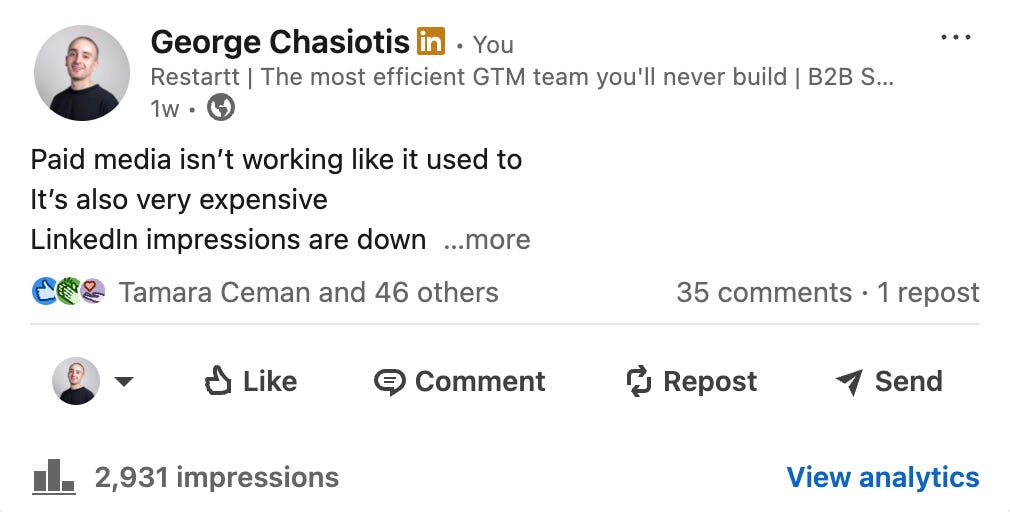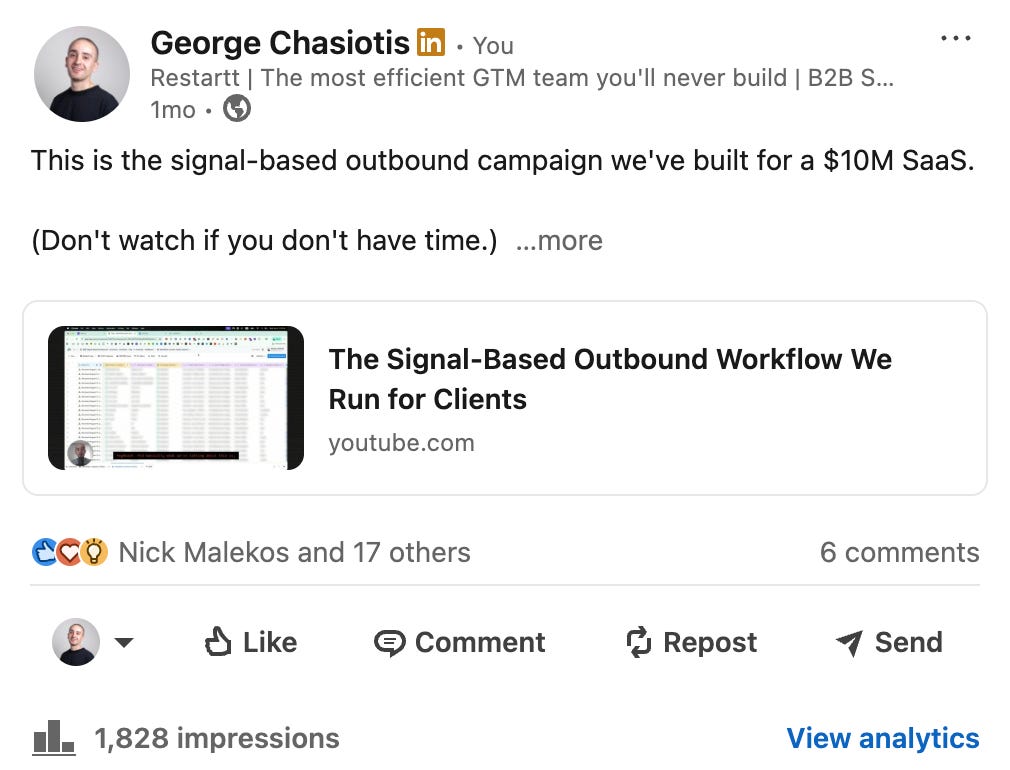LinkedIn Growth Objectives
Want better results from LinkedIn? Start here.
👋 Hey, I’m George Chasiotis. Welcome to GrowthWaves, your weekly dose of B2B growth insights—featuring powerful case studies, emerging trends, and unconventional strategies you won’t find anywhere else.
This note is brought to you by Restartt.
How do you know your company isn’t losing customers to a competitor CEO who’s active on LinkedIn?
Very often, that’s the real cost of your CEO having no voice on the platform.
That’s true for most B2B companies. Yes, even those in ‘boring industries.’
At my new LinkedIn Growth Agency, Restartt, we interview your CEO, ask the right questions, and turn their voice into content that drives business outcomes.
And, we’re so confident in our service that we offer the first month free, with no commitments.
The only catch: we work with just one company per month.
Apply here to see if you qualify
One thing I’ve always found frustrating about content marketing is how little people understand the objectives behind each piece.
Take any format:
Social posts
Blog posts
Webinars
Videos
Most people forget that content serves different purposes—depending on where your audience is in their journey.
And, trust me, I had many conversations trying to explain that over the years.
LinkedIn is no exception.
That’s why in this week’s note, I’d like to clear this up for you once and for all.
So next time you hear, “We’re on LinkedIn, but it doesn’t work,” you’ll know exactly what to say.
Let’s go.
The three objectives
There are 3 objectives when creating LinkedIn content:
1) Attention
Capture the interest of people who know you—and those who don’t.
2) Authority
Position yourself as the go-to in your space and stay top-of-mind.
3) Revenue
Drive demand for what you sell.
Each piece of content you publish should contribute to at least one of these objectives.
The distribution depends on your overarching goals and what you’re trying to achieve.
Here’s how that looks for me:
And here’s what the distribution of objectives looks like for me:
Attention = 3/5 = 60%
Authority = 4/5 = 80%
Revenue = 2/5 = 40%
As it is evident, I focus on attention and authority while maintaining a balance between them and revenue generation.
And yes, posts built for attention or authority often lead to revenue too.
For example, here’s a post that served the objective of attention:
Although the primary objective of this piece was to generate attention, it inevitably created a few sales and partnership opportunities for us.
On the other hand, here’s a post that mainly served the objective of authority, with a secondary objective of getting attention.
And lastly, here’s a post designed to generate sales opportunities for us:
Often, two objectives work together in the same post.
After all, who’d want to generate impressions and engagement without substance or the potential for revenue down the line?
The key point to keep in mind is to consider the objective first and then work backward.
Here’s a simple framework:
We want to achieve X → so we need to create Y
Just keep a healthy balance, even if all you want to talk about is your product and customer wins.
This is exactly how we build founder-led content strategies for Restartt’s clients.
And it works because it’s really simple.
Simple. Not easy. (As the book title goes.)
What also helps: tying each objective to specific content pillars.
For example:
Posts that fall under the ‘Enemies’ pillar usually drive attention and help build authority.
Posts about client results aren’t meant to drive attention as much as they’re meant to generate revenue.
And so on.
How to use this framework
As I mentioned in the introduction, I find it frustrating that many companies still don’t understand this.
Here’s how to put it into practice:
Pick a cadence that works for you (e.g., 3x / week)
Define your pillars (or even use mine!)
Tie them to the 3 objectives I shared
Maintain consistency for 3-6 months
And if you’re going to use this, don’t half-ass it.
Give it your best shot.
Final thoughts
As I’ve said before:
Start with the objective, and work backwards from there.
Maintain a healthy distribution across attention, authority, and revenue.
Then stay consistent. That’s the hard part, but it’s where the magic happens.
People may say LinkedIn doesn’t work anymore or that the algorithm’s against them.
But the truth is, LinkedIn still has a lot to offer.
Especially in B2B, no matter the growth motion (PLG, SLG, or anything in between).
Thank you for reading today’s note, and see you again next week.







